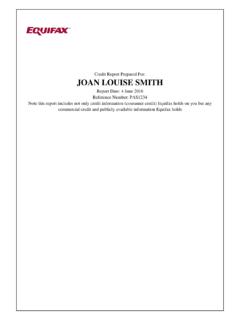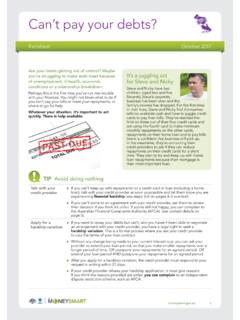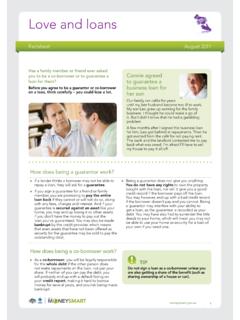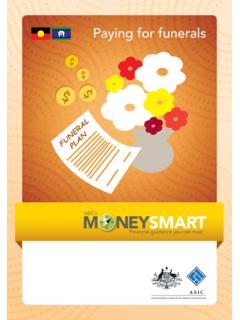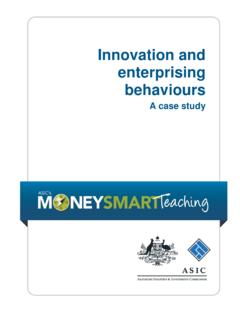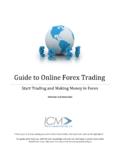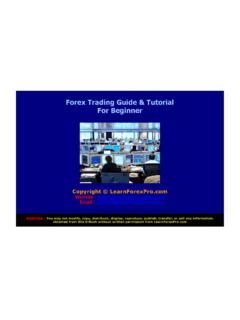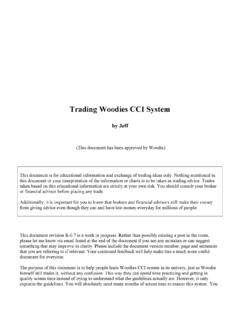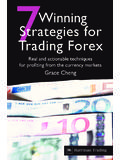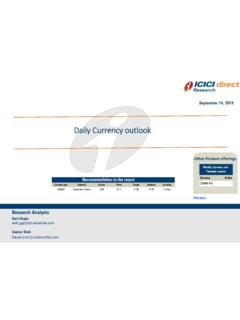Transcription of Thinking of trading contracts for difference (CFDs)?
1 Thinking of trading contracts for difference (CFDs)? This guide from the Australian Securities and Investments Commission (ASIC) can help you assess the risks of Remember Anything you put your money into should meet your investment goals and suit your one can guarantee the performance of any financial can lose all of or more than the money you put in if something goes are taking a big risk if you put all your money into one type of investment (for example, trading CFDs). Spreading your money between different types of investments ( diversification ) reduces the risk of losing everything.
2 This booklet has information about the operation and risks of trading contracts for difference (CFDs). In producing this booklet, ASIC does not endorse or promote this product or consider that it is suitable for many investors. The complex structure of CFDs and the risks associated with them mean that they are unlikely to meet the investment needs and objectives of most retail investors. Read this booklet, especially the section Are CFDs right for you? together with the Product Disclosure Statement (PDS) before deciding whether or not to trade CFDs.
3 ASIC has also developed 7 new disclosure benchmarks for over-the-counter (OTC) CFDs to help you assess the risks. CFDs are a complex and risky product. Make sure you understand the risks before making a decision about trading CFDs. The information in this booklet is general in nature. For a detailed strategy that takes into account your individual needs and circumstances, consider seeking professional advice from a licensed financial this booklet can help you3 Your questions answered Page 5If you have a specific question about CFDs, use this table to find the answer in this what the product is Page 6 Find out about CFDs and how they work.
4 Learn about leverage and the differences between CFDs and other financial the risks Page 12 There are significant risks involved in trading CFDs, including counterparty, investment and liquidity risks. Find out what these risks are and where to get more CFDs right for you? Page 20 Decide if trading CFDs is likely to meet your investment needs and all CFDs are the same Page 22 Learn about different types of CFDs and their features and essentials Page 28 Understand the nuts and bolts of trading CFDs, including fees and other charges, margin calls and how trading platforms your own research Page 34 Always read the PDS and other disclosure documents before making an investment decision.
5 For OTC CFDs, use the disclosure benchmark information in the PDS to assess the s 7 disclosure benchmarks for OTC CFDs Page 42 ASIC s benchmarks are designed to help you understand the risks of trading OTC and traps Page 51 Watch out for pressure-selling tactics and promotional gimmicks. How to complain Page 54 Contents4 5 CFDs are a high-risk financial product. It is important that you understand the key features of CFDs before you decide whether or not to risk your money. All the information in this booklet is important if you are considering this product.
6 However, if you have a specific question, the following table may help you find the relevant information. What is a CFD?See page 6Is trading CFDs the same as investing in shares?See page 7 What are the main risks of trading CFDs?See page 12 What is counterparty risk ?See page 14 How can I decide if trading CFDs is suitable for me?See page 20Do all CFD providers operate in the same way?See page 22 What are the differences between over-the-counter (OTC) CFDs and ASX exchange-traded CFDs?See page 22 What fees and charges (including interest) will I pay for trading CFDs?
7 See page 29 How do margin calls work?See page 31 How do stop losses work?See page 32 What other information is available on CFDs?See page 34 How can I use ASIC s 7 disclosure benchmarks to assess the risks of trading OTC CFDs?See page 42 What are the common traps to watch out for?See page 51 Your questions answered6 What is a CFD?A CFD is a leveraged derivative financial product. CFDs are derivatives because their value is derived from the value of another asset (for example, a share, commodity or market index). When you trade CFDs, you take a position on the change in value of the underlying asset over time.
8 You are essentially betting on whether the value of an underlying asset is going to rise or fall in the future compared to what it was when the contract was taken out (or executed). All CFD companies ( providers ) let you trade both long and short . Going long means buying a CFD in the expectation that the underlying asset will increase in value. Going short means selling a CFD with the expectation that the underlying asset will decrease in value. In both cases, when you close the contract , you hope to gain the difference between the closing value and the opening example, you might buy a CFD ( go long ) over Company X s shares.
9 If the price of Company X s shares rises and you close out your CFD, the seller of the CFD (the counterparty) will pay you the difference between the current price of the shares and the price when you took out the contract . However, if the price of Company X s shares falls, then you would have to pay the difference in price to the seller of the contract . This could be many times the amount of money you originally put in, because of do not have an expiry date like options or futures contracts . A CFD can only be closed by making a second, reverse trade.
10 Know what the product is77 What is leverage ?CFDs allow you to bet on rises and falls in shares, currency and other assets while only putting up a small amount of your own money. You are leveraging off the money you do have, in the hope of making CFDs, you only have to put in a fraction of the market value of the underlying asset when making a trade, sometimes as little as 1%. The remaining 99% of the value of the asset is covered by the CFD provider. Even though you only put up 1% of the value, you are entitled to the same gains or losses as if you had paid 100%.




